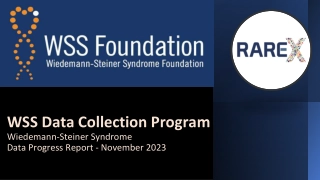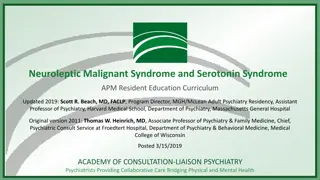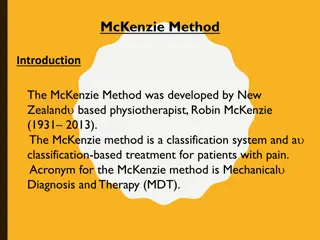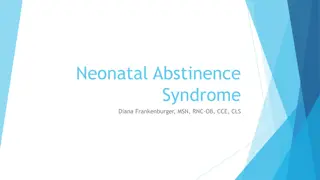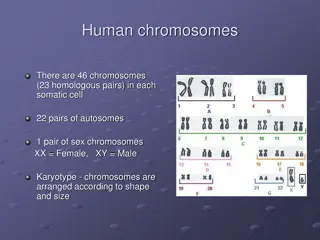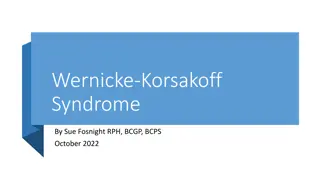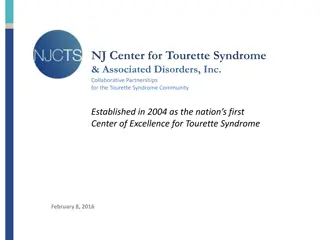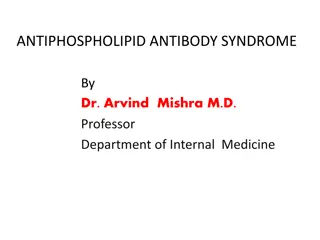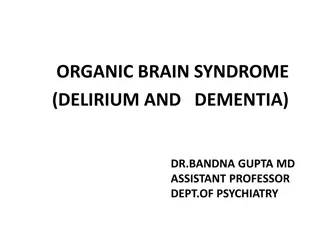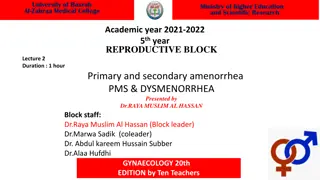Understanding Premenstrual Syndrome (PMS) and Its Impact
Premenstrual syndrome (PMS) is a common condition experienced by many women before their menstrual cycle. Symptoms include bloating, headaches, and moodiness. Cyclic hormonal changes and chemical fluctuations in the brain play a role in PMS. Factors like weight, exercise, stress, and diet can worsen symptoms. Recognizing and addressing PMS can help manage discomfort and improve quality of life for women.
Download Presentation

Please find below an Image/Link to download the presentation.
The content on the website is provided AS IS for your information and personal use only. It may not be sold, licensed, or shared on other websites without obtaining consent from the author. Download presentation by click this link. If you encounter any issues during the download, it is possible that the publisher has removed the file from their server.
E N D
Presentation Transcript
PREMENSTRUAL SYNDROME AND PREMENSTRUAL DYSPHORIC DISORDER PROF. DR. RABEA M. ALI
Premenstrual syndrome (PMS) is a combination of symptoms that many women get about a week or two before their period. Most women, over 90%, say they get some premenstrual symptoms, such as bloating, headaches, and moodiness.
Menstruation : is the monthly shedding of the lining of a woman s uterus (more commonly known as the womb). Menstruation is also known by the terms menses, menstrual period, cycle or period
PMS is also sometimes known as Premenstrual Tension (PMT). One in three women suffers discomforting symptoms in the days before their period. Epidemiology: Up to 80% of women of child- bearing age report having some symptoms prior to menstruation. These symptoms qualify as PMS in 20 to 30% of women and in three to eight percent are severe
Causes Cyclic changes in hormones. Signs and symptoms of premenstrual syndrome change with hormonal fluctuations and disappear with pregnancy and menopause. Chemical changes: Chemicals in the brain, such as serotonin, fluctuate during the menstrual cycle. Serotonin contributes to feelings of happiness and regulates mood. It is possible that women with low levels of serotonin are more sensitive to PMS symptoms.
Weight and exercise Research undertaken has shown that women are more likely to have PMS symptoms if they are obese (body mass index over 30) and if they exercise very little. Stress Stress can aggravate the symptoms of PMS, although it is not a direct cause Diet: Low levels of vitamins and minerals may also worsen PMS symptoms.
Symptoms Physical signs and symptoms 1. Joint or muscle pain 2. Headache 3. Fatigue 4. Weight gain related to fluid retention 5. Abdominal bloating 6. Breast tenderness 7. Acne flare-ups 8. Constipation or diarrhea
Emotional symptoms 1. Tension or anxiety 2. Depressed mood 3. Crying spells 4. Mood swings and irritability or anger 5. Appetite changes and food cravings 6. Trouble falling asleep (insomnia) 7. Social withdrawal 8. Poor concentration and behavioral signs and
Risk factors for premenstrual syndrome include: 1. a history of depression or mood disorders, such as postpartum depression or bipolar disorder 2. a family history of PMS 3. a family history of depression 4. domestic violence 5. substance abuse 6. physical trauma 7. emotional trauma
Treatment options for PMS vary depending on a person s specific symptoms. Medication that people take to treat PMS include: Pain relievers such as acetaminophen, which can help relieve 1. muscle pain, cramps, and headaches Non-steroidal anti-inflammatory drugs, which can reduce 2. cramp pain, headaches, and muscle aches Diuretics, which can help relieve bloating and breast soreness 3. For severe PMS symptoms, a doctor may recommend that a 4. person starts taking hormonal birth control pills to reduce PMS symptoms.
Hormone treatments pill: Combined oral contraceptive thought to alleviate PMS by stopping ovulation and reducing hormonal fluctuations. Estrogen patches and implants: there is scientific evidence that extra estrogen given this way can relieve PMS symptoms
Mirena intra-uterine system (IUS): this is a contraceptive coil which releases a small dose of a progestogen. Some women say it improves PMS, as well as reducing the heaviness and duration of their period Gonadotropin-releasing hormone analogues are drugs that prevent ovulation and should only be used for the treatment of severe PMS.
Relaxation technique relaxation techniques include: 1. yoga 2. tai chi 3. stretching 4. taking a bath 5. going for a walk 6. journaling 7. speaking with a close friend or loved one 8. meeting with a mental health counselor or therapist
Reduce PMS-related bloating by: 1.Not eating salty foods, which make bloating worse 2.Eating potassium-rich foods, such as bananas 3.Staying hydrated 4.Doing gentle exercise
Eat certain nutrients Making some dietary changes may reduce mild to moderate PMS symptoms. 1. Magnesium may help relieve migraine episodes related to PMS. 2. Fatty acids may help reduce abdominal cramps related to PMS. 3. Calcium supports bone strength and density. Having adequate calcium levels also helps regulate mood, sleep, and food cravings.
Surgery A hysterectomy with removal of both ovaries to prevent ovulation may be necessary for a few women who suffer from severe PMS.
Premenstrual dysphoric disorder (PMDD) is a health problem that is similar to premenstrual syndrome (PMS) but is more serious. PMDD causes severe irritability, depression, or anxiety in the week or two before the period starts. Symptoms usually go away two to three days after the period starts. may need medicine or other treatment to help with symptoms.
When does PMDD begin? Premenstrual symptoms can begin at any age after a woman begins to menstruate. Some women report that symptoms worsen when they are in their 30s; others associate the onset of symptoms with a reproductive event, such as a baby s birth or surgery for tubal ligation.
causes We don t know for sure what causes PMDD, but researchers believe that, like other mood disorders, PMDD may involve an underlying vulnerability in brain chemistry. Because of this vulnerability, monthly fluctuations in hormones (estrogen and progesterone) have a negative effect on the way nerve cells in the brain function, leading to premenstrual symptoms.
The symptoms of PMDD may include: 1. depression 2. thoughts of suicide 3. panic attacks 4. extreme anxiety 5. anger with severe mood swings 6. crying spells 7. a lack of interest in daily activities 8. insomnia 9. trouble thinking or focusing 10.binge eating
For PMDD to be diagnosed: women must have 5 of the following symptoms for most of the week before menses, and symptoms must become minimal or absent during the week after menstruation. Symptoms must include 1 of the following: Marked mood swings (eg, sudden sadness) Marked irritability or anger or increased interpersonal conflicts
Marked depressed mood, feelings of hopelessness, or self-deprecating thoughts Marked anxiety, tension, or an on- edge feeling
Treatments for PMDD include: 1. Antidepressants 2. Birth control pills to treat PMDD. 3. Over-the-counter pain relievers may help relieve physical symptoms, such as cramps, joint pain, headaches, backaches, and breast tenderness. These include: Ibuprofen, Naproxen, Aspirin
What nutritional approaches are used to treat PMDD? Include 1. Limiting consumption of alcohol, caffeine, and salt. 2. Some experts also advise avoiding sugar and eating more complex carbohydrates. 3. The experts give little support to vitamins, herbal preparations, and other dietary supplements for PMDD
1. Potter, J., Bouyer, J., Trussell, J., Moreau, C. (2009). Premenstrual Syndrome Prevalence and Fluctuation over Time: Results from a French Population-Based Survey: Journal of Women s Health; 18(1): 31 39. 2. Pearlstein, T., Steiner, M. (2008). Premenstrual dysphoric disorder: burden of illness and treatment update. Neuroscience; 33(4): 291 301. 3. American Psychiatric Association. (2013). Diagnostic and statistical manual of mental disorders (5th ed.). Washington, DC: The American Psychiatric Association. 4. The Medical Letter. (2003). Which SSRI?(link is external) Med Lett Drugs Ther; 45(1170):93-5. 5. Goodale, I.L., Domar, A.D., Benson, H. (1990). Alleviation of premenstrual syndrome symptoms with the relaxation response(link is external). Obstet Gynecol; 75(4):649-55 6. WWW.Womens -health-concern.org 7. Office on Women's Health. December 23, 2014. Archived from the original on 28 June 2015. Retrieved 23 June 2015. Journal of Psychiatry &


